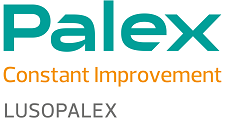Full Programme
Online and PDF Format
Thursday • February 18th, 2021
ZOOM Meeting Room 1 |
09:00 – 09:15- Welcome and opening session (Central European Time) João F. Mano, Romana Santos, Vítor M. Gaspar |
|
Plenary Session Chair: Janek von Byern |
|
|
09:15 – 10:00 Plenary Presentation – PL1 Chao Zhong Engineering Smart Living Glues with Synthetic Biology |
|
|
10:00 – 10:45 Plenary Presentation - PL2 Marleen Kamperman Bio-inspired coacervate extruded materials |
|
|
10:45 - 11:15 Break + Poster Session (Slack Online Platform) |
|
|
11:15 - 13:30 Oral Presentations S1 and S2 |
|
|
Session 1 – Bioinspired Adhesives Designs Session Chair: Daniel Ruíz-Molina ZOOM Meeting Room 1 |
Session 2 – Adhesives for Healthcare Applications Session Chair: José das Neves ZOOM Meeting Room 2 |
|
11:15 – 11:30 S1-O1: Maria Cristina Cringoli Supramolecular Hydrogel Biomaterial from Short D,L-peptides for Biomimetic Cell Adhesion |
11:15 – 11:30 S2-O1: José Miguel Martín-Martínez Novel polyurethane pressure sensitive adhesives with temperature controlled reversible tack intended for medical patches |
|
11:30 – 11:45 S1-O2: Yong Xu Convergent Synthesis of Diversified Reversible Network Leads to Liquid Metal Containing conductive Hydrogel Adhesives |
11:30 – 11:45 S2-O2: Andreia Almeida Natural chitosan-based micelles as a promising strategy on colorectal cancer therapy |
|
11:45 – 12:00 S1-O3: Longjian Xue Bioinspired surfaces for controllable adhesion |
11:45 – 12:00 S2-O3: Cláudia Azevedo Biomimetic nanoparticles for enhanced FcRn-mediated delivery across mucosal barriers |
|
12:00 – 12:15 S1-O4: Daniele Liprandi OpenTape: an open tool for peeling simulations |
12:00 – 12:15 S2-O4: PP Anand Immunogenicity, allergenicity, antigenicity and expression analysis of wet adhesive mussel foot proteins of Asian green mussel |
|
12:15 – 12:30 S1-O5: Preeti Sharma Bioinspired design and mechanics of a soft probabilistic fastener |
12:45 – 12:30 S2-O5: Eugénia Carvalho Biomaterial-based dressings for the sustained delivery of neurotensin – an efficient strategy to improve early diabetic wound healing |
|
12:30 – 12:45 S1-O6: Fahanwi Asabuwa Ngwabebhoh Upcycling of dairy wastes to microbial cellulose: a bioadhesive property based advanced biomaterial |
12:30 – 12:45 S2-O6: Thies Büscher Walking leaves – sticky eggs: multifunctional adhesive system of leaf insect eggs (Phasmatodea: Phylliidae) |
|
12:45 – 13:00 S1-O7: Yazhong Bu Self-healing bioadhesives with strong wet adhesive strength and multi-functionality |
12:45 – 13:00 S2-O7: Roni Sverdlov Arzi An experimental and theoretical insight into the interaction between nanoparticles and mucosal tissues |
|
13:00 – 13:15 S1-O8: Esra Yuca Self-assembly of microbial functional amyloids on solid surfaces |
13:00 – 13:15 S2-O8: Mehdi Vahdati Mechanical Interlocking as an Alternative Tissue Adhesion Strategy |
|
13:15 – 13:30 S1-O9: Laura Mears Bio-adhesion properties of the attachment cement from the tick species Dermacentor marginatus |
|
|
13:30 - 14:30 Lunch Break |
|
ZOOM Meeting Room 1 |
|
|
Plenary Session Chair: Markus Linder |
|
|
14:30 - 15:15 Plenary Presentation - PL3 Henrik Birkedal Polyelectrolyte/polyphenol materials: hydrogels and adhesives |
|
|
15:15 - 16:00 Plenary Presentation – PL4 Nick Aldred Identification, characterization and recombinant production of adhesive proteins from barnacle larvae |
|
|
16:00 - 16:45 Plenary Presentation – PL5 Adam Celiz Adhesion to organs and tissues - Tough to pull off |
|
|
16:45 - 17:30 Plenary Presentation – PL6 Johnathan Wilker “Real” biological adhesive proteins and “Fake” proteins that can be adhesives via biomimetics |
|
Friday • February 19th, 2021
ZOOM Meeting Room 1 |
||||||||||||||||||||||||||||||||||||||||||
|
Plenary Session Chair: Romana Santos |
||||||||||||||||||||||||||||||||||||||||||
|
09:00 – 9:45 Plenary Presentation – PL7 Markus Linder Engineered silk proteins as adhesives for cellulose materials – in search for mechanisms |
||||||||||||||||||||||||||||||||||||||||||
|
09:45 – 10:30 Plenary Presentation – PL8 Daniel Ruíz-Molina Mussel-inspired coatings and films for biological applications |
||||||||||||||||||||||||||||||||||||||||||
|
10:30 - 11:00 Break + Poster Session (Slack Online Platform) |
||||||||||||||||||||||||||||||||||||||||||
|
11:00 - 13:15 Oral Presentations S3 and S4 |
|
|
Session 3 – Molecular Mechanisms of Adhesion Session Chair: Peter Ladurner ZOOM Meeting Room 1 |
Session 4 – Catechol-based Adhesives Session Chair: Julieta Paez ZOOM Meeting Room 2 |
|
11:00 – 11:20 *S3-INV1 Invited Oral: Peter Ladurner Flatworm temporary adhesion in diverse aqueous environments |
11:00 – 11:20 *S4-INV1 Invited Oral: Julieta Paez Mussel-Inspired Photodegradable Hydrogels for Cell Encapsulation and Tissue Adhesion |
|
11:20 – 11:35 S3-O1: Yaqing Chen Self-forming double-crosslinked hydrogels with built-in oxidation button |
11:20 – 11:35 S4-O1: Ana Rita Neves Synthesis, antibiofilm properties and application into marine coatings of a new eco-friendly polyphenolic compound (MARINE) |
|
11:35 – 11:50 S3-O2: Fan Zeng Bioadhesion in Ascidians |
11:35 – 11:50 S4-O2: Bruno Zappone Adhesive properties of adsorbed layers of two recombinant mussel foot proteins with different levels of DOPA and tyrosine |
|
11:50 – 12:05 S3-O3: Guido Raos Polymer-mediated adhesion between heterogeneous surfaces: molecular modeling insights |
11:50 – 12:05 S4-O3: Maria Laura Alfieri Enzymatic oxidation of tyramine: a mild, controllable and low-waste mussel-inspired coating technology |
|
12:05 – 12:20 S3-O4: Philip Bertemes Cost-effective draft genomes assembled from ultra-long genomic reads facilitate the identification of giant adhesive proteins |
12:05 – 12:20 S4-O4: Tobias Priemel Mussels fabricate vanadium-reinforced adhesives using a microchannel-based secretion system |
|
12:20 – 12:35 S3-O6: Morgane Algrain Localization and characterization of sea star adhesive proteins |
12:20 – 12:35 S4-O5: Ana Vian Electrosynthesis and physicochemical properties of biomimetic polycatecholamines and polycatechol coatings |
|
12:35 – 12:50 S4-O6: Julia Appenroth A mussel inspired hydrogel |
|
|
12:50 - 14:15 Lunch Break |
|
|
14:15 - 15:45 Oral Presentations S5 and S6 |
|
|
Session 5 – Chemical and Structural Characterization; Special Symposium on Biomimetic Marine-derived Adhesives (co-organizer J.M.Rodrigues) Session Chair: João Rodrigues ZOOM Meeting Room 1 |
Session 6 – Adhesives for Healthcare Session Chair: Seda Kizilel ZOOM Meeting Room 2 |
|
14:15 – 14:35 *S5-INV1 Invited Oral: Elise Hennebert Sea star-inspired recombinant adhesive proteins self-assemble and adsorb on surfaces in aqueous environments |
14:15 – 14:35 *S6-INV1 Invited Oral: Paola Giardina Immobilization of fungal adhesive proteins and their chimeric variants |
|
14:35 – 14:55 *S5- INV2 Invited Oral: João Rodrigues Bioinspired Hydrogels with Self-Healing Ability for Tissue Regeneration |
14:35 – 14:55 *S6-INV2 Invited Oral: Seda Kizilel Optimization of Bioadhesive Chitosan for Corneal Alkali Burn Model in Mice |
|
14:55 – 15:10 S5-O1: Katia Amaral Bioinspired patches with high physical fixation power of drug carriers |
14:55 – 15:10 S6-O1: Sophie Greistorfer Glowing mucus – Characterisation of the unique defence secretion of Latia neritoides (Gastropoda) |
|
15:10 – 15:25 S5-O2: Jessica Torres Formulation Design of a Recombinant Protein-Based Lung Sealant |
15:10 – 15:25 S6-O2: Lisa Nieuwboer Tree frog attachment performance is independent of substrate surface energy: ecological and functional implications |
|
15:25 – 15:40 S5-O3: Luís Ferreira Polydopamine Chemo-Theranostic Nanotherapeutics Screening in Breast Cancer 3D-Tumor Models |
15:25 – 15:40 S6-O3: Patrick Steinbauer Single-Molecule Force Spectroscopy Measurement of natural and biomimetic Adhesion Motifs |
ZOOM Meeting Room 1 |
|
|
Plenary Session Chair: Romana Santos |
15:40 – 16:25 Plenary Presentation – PL9 Costantino Creton Stickiness underwater with coacervates |
|
16:25 – 16:40 Closing session and ICBBA 2021 | MDPI Biomimetics Best Photo Award |
|
|
17:00 COST Action CA15216 Managing Committee Meeting |
|
Invited Speakers
Adam D. Celiz
Imperial College London, UK
 Adam Celiz was born in London and received a 1st Class Bachelor’s degree in Pharmaceutical and Chemical Sciences from the University of Brighton. He then undertook PhD studies at the Melville Laboratory for Polymer Synthesis in the Department of Chemistry at the University of Cambridge. Upon graduation, he pursued postdoctoral studies in the Laboratory for Biophysics and Surface Analysis at the University of Nottingham. In 2014, Adam was awarded a Marie Curie International Outgoing Fellowship (IOF) to build his own research program at the Wyss Institute for Biologically Inspired Engineering at Harvard University. In 2017, Adam joined the Department of Bioengineering at Imperial College London as Lecturer (Assistant Professor).
Adam is currently a UK Research and Innovation (UKRI) Future Leader Fellow, has an active grant portfolio of >£2.25 million, 3 patents and has published in journals including Science, Nature Materials and Advanced Materials. His recent innovations as an Early Career Researcher in Biomaterials have led to international recognition from the Biomaterials Interfaces Division of the American Vacuum Society (2015), the UK Society for Biomaterials (2017 Larry Hench Young Investigator Prize) and most recently, he was selected as 2019 Emerging Investigator by the journal Biomaterials Science.
Adam Celiz was born in London and received a 1st Class Bachelor’s degree in Pharmaceutical and Chemical Sciences from the University of Brighton. He then undertook PhD studies at the Melville Laboratory for Polymer Synthesis in the Department of Chemistry at the University of Cambridge. Upon graduation, he pursued postdoctoral studies in the Laboratory for Biophysics and Surface Analysis at the University of Nottingham. In 2014, Adam was awarded a Marie Curie International Outgoing Fellowship (IOF) to build his own research program at the Wyss Institute for Biologically Inspired Engineering at Harvard University. In 2017, Adam joined the Department of Bioengineering at Imperial College London as Lecturer (Assistant Professor).
Adam is currently a UK Research and Innovation (UKRI) Future Leader Fellow, has an active grant portfolio of >£2.25 million, 3 patents and has published in journals including Science, Nature Materials and Advanced Materials. His recent innovations as an Early Career Researcher in Biomaterials have led to international recognition from the Biomaterials Interfaces Division of the American Vacuum Society (2015), the UK Society for Biomaterials (2017 Larry Hench Young Investigator Prize) and most recently, he was selected as 2019 Emerging Investigator by the journal Biomaterials Science.
Chao Zhong
ShanghaiTech University, China
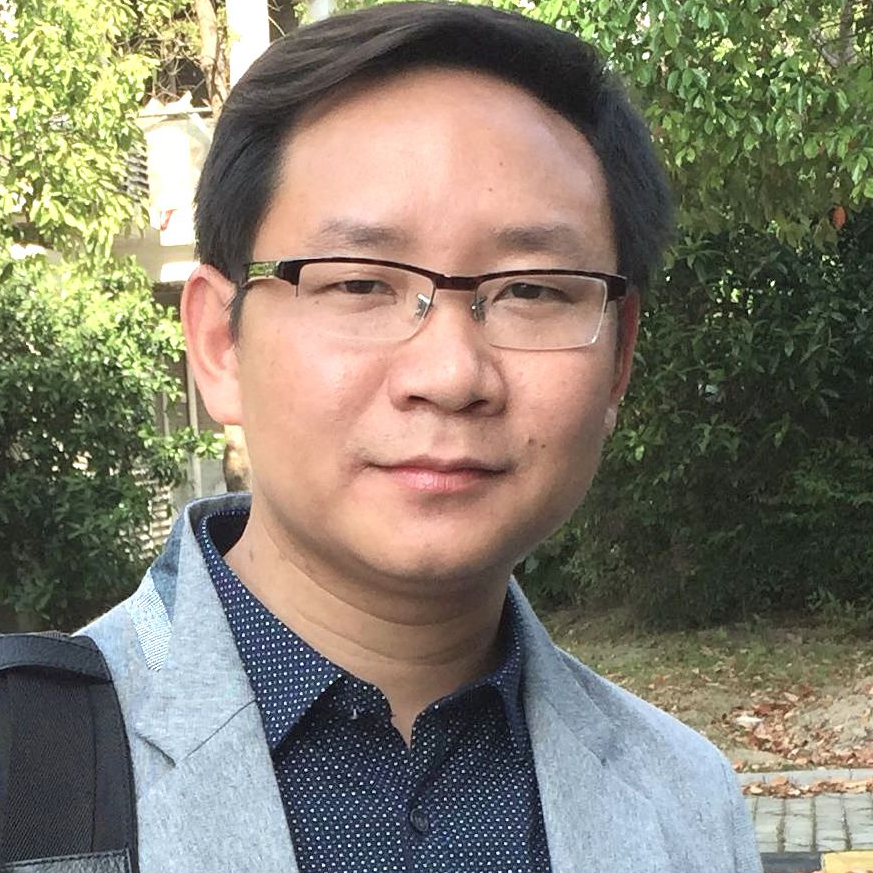 Chao Zhong is a tenured Associate Professor and Principal Investigator at ShanghaiTech University, China. He currently directs the Materials and Physical Biology Division located at the School of Physical Science and Technology (SPST). The Zhong laboratory is currently undertaking an “Integrative Bio-inspired Molecular Engineering” (IBME) research program, aiming to leverage synthetic biology tools for engineering living materials and bionanotechnologies. Chao received his B.E. in MSE from Tianjin University and his Ph.D. from Cornell University in the area of biomaterials. He conducted his postdoctoral research at the University of Washington, Seattle, where he developed the first solid-state bioprotonic field-effect transistor. He then worked as a research associate at the MIT Synthetic Biology Center, where he developed self-assembling multi-protein underwater adhesives using a modular genetic strategy. As first or correspondence authors, he has published 40+ papers in prestigious international journals such as Nature Nano, Nature Chemical Biology, Science Advances, Nature communications, Advanced Materials, and Materials Today, to name a few. He is the recipient of several awards including the “1000 Young Scholar Plan” sponsored by the Central Government of China, the “Dawn” Scholar Program of Shanghai Education Commission, and the MIT outstanding Post-doctoral research award.
Chao Zhong is a tenured Associate Professor and Principal Investigator at ShanghaiTech University, China. He currently directs the Materials and Physical Biology Division located at the School of Physical Science and Technology (SPST). The Zhong laboratory is currently undertaking an “Integrative Bio-inspired Molecular Engineering” (IBME) research program, aiming to leverage synthetic biology tools for engineering living materials and bionanotechnologies. Chao received his B.E. in MSE from Tianjin University and his Ph.D. from Cornell University in the area of biomaterials. He conducted his postdoctoral research at the University of Washington, Seattle, where he developed the first solid-state bioprotonic field-effect transistor. He then worked as a research associate at the MIT Synthetic Biology Center, where he developed self-assembling multi-protein underwater adhesives using a modular genetic strategy. As first or correspondence authors, he has published 40+ papers in prestigious international journals such as Nature Nano, Nature Chemical Biology, Science Advances, Nature communications, Advanced Materials, and Materials Today, to name a few. He is the recipient of several awards including the “1000 Young Scholar Plan” sponsored by the Central Government of China, the “Dawn” Scholar Program of Shanghai Education Commission, and the MIT outstanding Post-doctoral research award.
Jonathan Wilker
Purdue University, USA
 Jonathan grew up in the Boston area and was often taken to the beach by his parents. Now at Purdue University, his research program focuses on materials produced by marine organisms. A particular focus is the adhesives and cements produced by mussels and oysters for sticking to rocks. Ongoing efforts include characterization of these marine biological materials, developing synthetic polymer mimics, and designing applications for these new materials. Projects are often inspired by what is seen in the seas.
Jonathan grew up in the Boston area and was often taken to the beach by his parents. Now at Purdue University, his research program focuses on materials produced by marine organisms. A particular focus is the adhesives and cements produced by mussels and oysters for sticking to rocks. Ongoing efforts include characterization of these marine biological materials, developing synthetic polymer mimics, and designing applications for these new materials. Projects are often inspired by what is seen in the seas.
Markus Linder
Aalto University, Finland
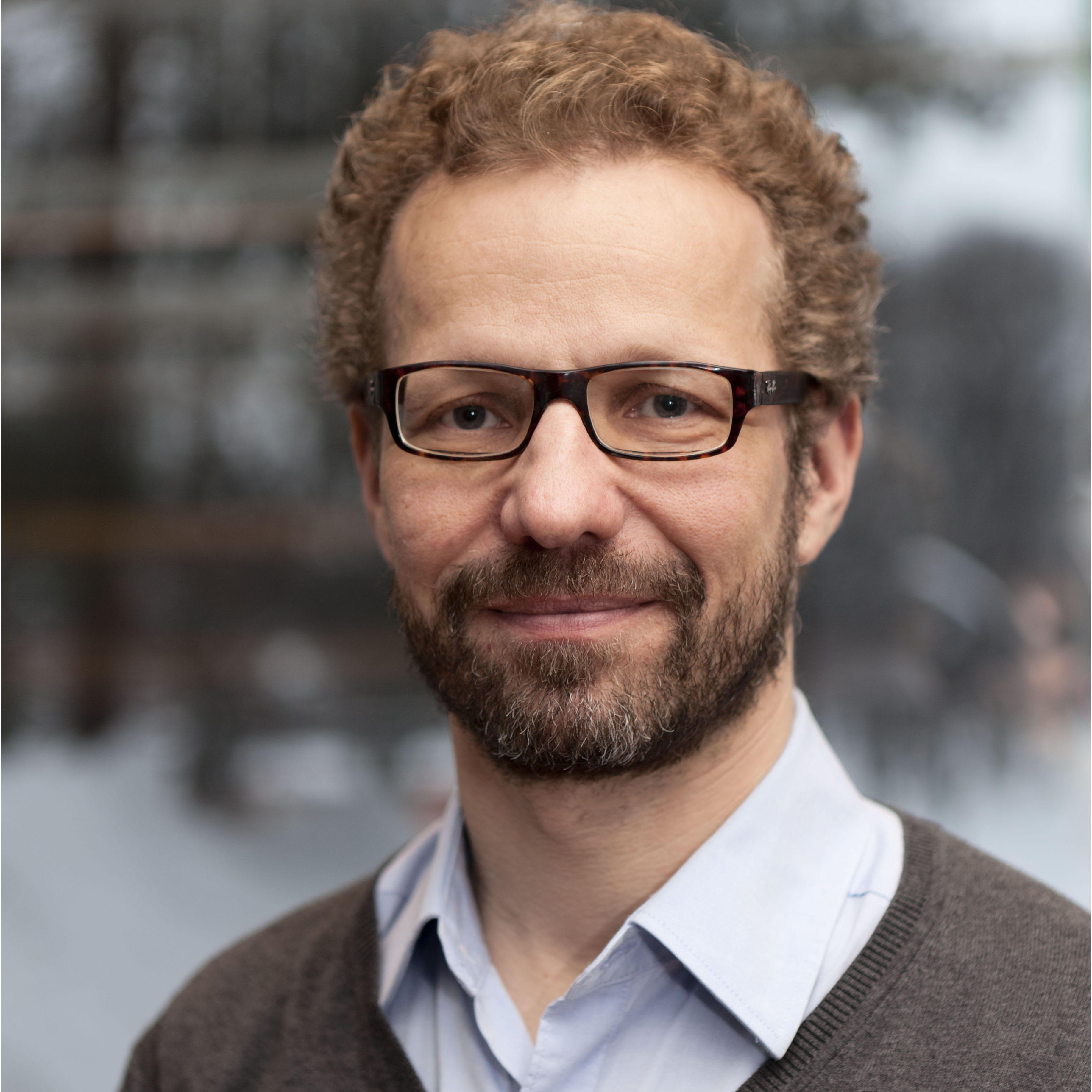 Markus Linder is professor of biomolecular materials at Aalto University, Espoo, Finland. The group works towards a molecular understanding of biological materials. A major approach is to use bionanoscience together with protein engineering to reconstruct materials. The work aims towards sustainable technology and new high-performance biologically produced materials.
The research in protein engineering for materials has revealed new nanomaterial self-assembly mechanisms and properties. By exploiting these, sensors, responsive materials, drug delivery systems, surface functionalization, and even enhanced oil recovery etc have been achieved. Protein engineering has been used toto join together different types of nanomaterials such as graphene, carbon nanotubes, and cellulose. Recent advances include the use of liquid-liquid phase separation (LLPS) to achieve the assembly of protein-based materials by using precisely design new proteins that function as adhesives for the matrix component in high-toughness composites. These engineered proteins contain intrinsically disordered regions from e.g. spider silk together with adhesive domains. Continuing efforts focus on the role of LLPS in the assembly of biological materials.
Markus Linder is professor of biomolecular materials at Aalto University, Espoo, Finland. The group works towards a molecular understanding of biological materials. A major approach is to use bionanoscience together with protein engineering to reconstruct materials. The work aims towards sustainable technology and new high-performance biologically produced materials.
The research in protein engineering for materials has revealed new nanomaterial self-assembly mechanisms and properties. By exploiting these, sensors, responsive materials, drug delivery systems, surface functionalization, and even enhanced oil recovery etc have been achieved. Protein engineering has been used toto join together different types of nanomaterials such as graphene, carbon nanotubes, and cellulose. Recent advances include the use of liquid-liquid phase separation (LLPS) to achieve the assembly of protein-based materials by using precisely design new proteins that function as adhesives for the matrix component in high-toughness composites. These engineered proteins contain intrinsically disordered regions from e.g. spider silk together with adhesive domains. Continuing efforts focus on the role of LLPS in the assembly of biological materials.
Marleen Kamperman
Cornell University, USA
 Prof. Dr. Marleen Kamperman is interested in the biologically inspired synthesis of polymers and nanostructured surfaces with controlled adhesive and mechanical properties. She received her PhD in Materials Science & Engineering from Cornell University, Ithaca, NY, where she worked in the group of Prof. Wiesner on the development of ordered mesoporous high-temperature ceramics using block copolymers. From 2008 to 2010, she was a postdoctoral researcher in the Functional Surfaces group of Prof. Arzt at INM – Leibniz Institute for New Materials in Saarbrücken, Germany, where she worked on the development of bio-inspired responsive adhesive systems. She started her group ‘Bioinspired Functional Polymers’ at Wageningen University in the Physical Chemistry and Soft Matter department in September 2010. In 2018 she was appointed Full Professor in Polymer Science at the University of Groningen. In the new research group that she established in Groningen she combines her experience in polymer science and material development with the fundamentals of coacervation and bio-inspiration.
Prof. Dr. Marleen Kamperman is interested in the biologically inspired synthesis of polymers and nanostructured surfaces with controlled adhesive and mechanical properties. She received her PhD in Materials Science & Engineering from Cornell University, Ithaca, NY, where she worked in the group of Prof. Wiesner on the development of ordered mesoporous high-temperature ceramics using block copolymers. From 2008 to 2010, she was a postdoctoral researcher in the Functional Surfaces group of Prof. Arzt at INM – Leibniz Institute for New Materials in Saarbrücken, Germany, where she worked on the development of bio-inspired responsive adhesive systems. She started her group ‘Bioinspired Functional Polymers’ at Wageningen University in the Physical Chemistry and Soft Matter department in September 2010. In 2018 she was appointed Full Professor in Polymer Science at the University of Groningen. In the new research group that she established in Groningen she combines her experience in polymer science and material development with the fundamentals of coacervation and bio-inspiration.
Nick Aldred
University of Essex, UK
 Originally from Manchester, UK, Nick studied for an undergraduate degree in Marine Biology at the University of Wales, Bangor. After graduating in 2002, he moved to the Marine Biofouling Laboratory at Newcastle University where he completed his PhD and two post-doctoral projects before being appointed as a Faculty Research Fellow. In April 2020 he accepted a position in the Faculty of Science and Health at the University of Essex where he is now a Lecturer in the School of Life Sciences. Supported by national and international funders from the defence, charitable and industrial sectors, Nick’s research has retained a focus on fundamental questions surrounding the recruitment, settlement and adhesion of marine invertebrates, particularly barnacles, with the aim to inform more effective fouling-control technologies and the development of bio-inspired adhesives. Adhesion systems of marine invertebrates involve complex morphology, behaviours and various biogenic macromolecules including proteins, lipids and carbohydrates, all of which contribute to attachment underwater. Understanding the process of adhesion holistically, using multidisciplinary approaches, is challenging but essential if we are to unravel the complex attachment systems of marine invertebrates and inspire new technologies.
Originally from Manchester, UK, Nick studied for an undergraduate degree in Marine Biology at the University of Wales, Bangor. After graduating in 2002, he moved to the Marine Biofouling Laboratory at Newcastle University where he completed his PhD and two post-doctoral projects before being appointed as a Faculty Research Fellow. In April 2020 he accepted a position in the Faculty of Science and Health at the University of Essex where he is now a Lecturer in the School of Life Sciences. Supported by national and international funders from the defence, charitable and industrial sectors, Nick’s research has retained a focus on fundamental questions surrounding the recruitment, settlement and adhesion of marine invertebrates, particularly barnacles, with the aim to inform more effective fouling-control technologies and the development of bio-inspired adhesives. Adhesion systems of marine invertebrates involve complex morphology, behaviours and various biogenic macromolecules including proteins, lipids and carbohydrates, all of which contribute to attachment underwater. Understanding the process of adhesion holistically, using multidisciplinary approaches, is challenging but essential if we are to unravel the complex attachment systems of marine invertebrates and inspire new technologies.
Daniel Ruiz-Molina
Catalan Institute of Nanoscience and Nanotechnology (ICN2), Spain
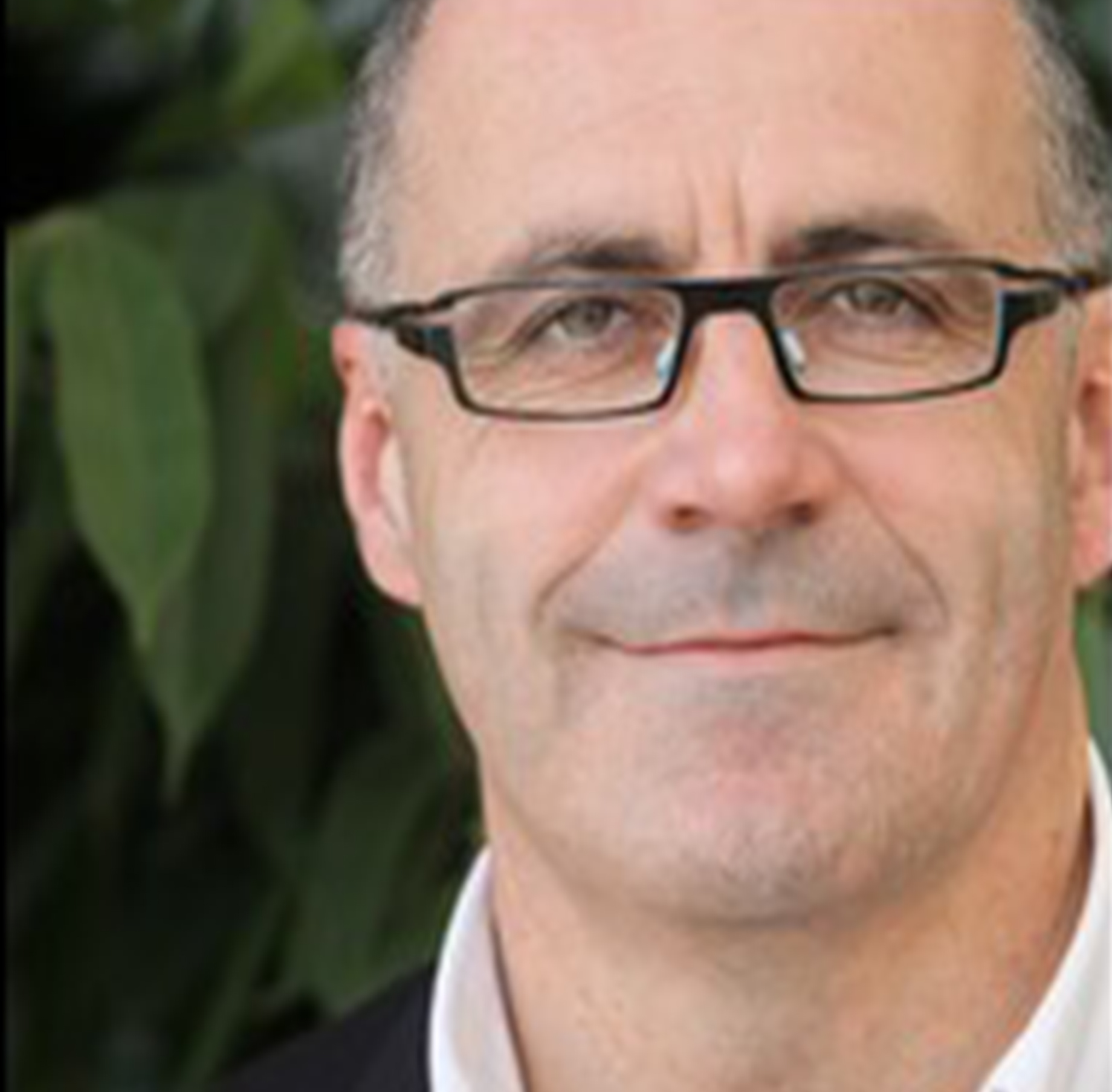 Daniel Ruiz-Molina earned his PhD in polyradical dendrimers at the Institut de Ciència de Materials de Barcelona (ICMAB-CSIC) under Prof. Jaume Veciana. He then took a postdoctoral position at the University of California San Diego (USA), where he spent three years working on single molecule magnets and molecular switches. Since 2001 he has held a permanent position as a Spanish National Research Council (CSIC) researcher, most recently at the ICN2, where he is the leader of the ICN2 Nanostructured Functional Materials Group also known as NanosFun. His main research areas include the fabrication of hybrid colloids and surfaces, biomimetic functional nanostructures, and micro- or nanoparticles for smart applications and encapsulation and delivery systems.
Daniel Ruiz-Molina earned his PhD in polyradical dendrimers at the Institut de Ciència de Materials de Barcelona (ICMAB-CSIC) under Prof. Jaume Veciana. He then took a postdoctoral position at the University of California San Diego (USA), where he spent three years working on single molecule magnets and molecular switches. Since 2001 he has held a permanent position as a Spanish National Research Council (CSIC) researcher, most recently at the ICN2, where he is the leader of the ICN2 Nanostructured Functional Materials Group also known as NanosFun. His main research areas include the fabrication of hybrid colloids and surfaces, biomimetic functional nanostructures, and micro- or nanoparticles for smart applications and encapsulation and delivery systems.
Henrik Birkedal
Aarhus University, Denmark
 Henrik Birkedal obtained his PhD with honors from Université de Lausanne, Switzerland, followed by a postdoc at University of California, Santa Barbara. In 2004, he was awarded a stipend to establish his own research program at Aarhus University where he is now a full professor and leads a research group with the area of biological and bioinspired materials. His research interest are diverse and span advanced structural characterization using synchrotron imaging, diffraction, fluorescence and scattering; crystallization; biomineralization; self-healing hydrogel materials; catechol chemistry etc. He has published over 125 papers.
Henrik Birkedal obtained his PhD with honors from Université de Lausanne, Switzerland, followed by a postdoc at University of California, Santa Barbara. In 2004, he was awarded a stipend to establish his own research program at Aarhus University where he is now a full professor and leads a research group with the area of biological and bioinspired materials. His research interest are diverse and span advanced structural characterization using synchrotron imaging, diffraction, fluorescence and scattering; crystallization; biomineralization; self-healing hydrogel materials; catechol chemistry etc. He has published over 125 papers.
Costantino Creton
École Supérieure de Physique et de Chimie Industrielles de la ville de Paris, France
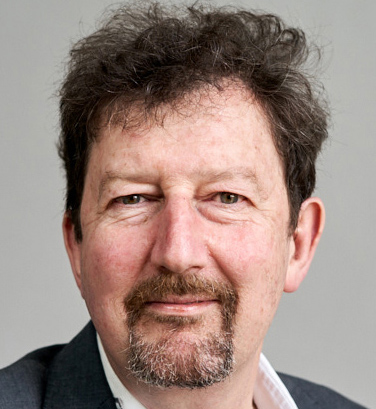 Costantino Creton graduated in Materials Science from the EPFL (Switzerland) in 1985 and obtained his Ph.D in 1991 in Materials Science at Cornell University (USA). After a post-doc at the IBM Almaden Research Center (USA), he joined the ESPCI Paris first as a post-doc in 1993 and, since 1994 as a CNRS permanent researcher. He was promoted CNRS research director (equivalent to Professor) in 2001 in the Laboratory of Soft Matter Science and Engineering where he is now. He also holds since 2011 the position of scientific chairman of the Performance Polymers technology area of the Dutch Polymer Institute and since May 2019 he is the VP research of the ESPCI Paris-PSL. He has published more than 200 articles in peer-reviewed journals, ten book chapters and has given more than 110 invited and plenary lectures at international conferences. His research interests focus on the mechanical properties of polymers at interfaces and on deformation and fracture of soft polymer networks. He has received several prizes and awards including the Wake Medal from the UK Society of Adhesion and Adhesives in 2011 and the Adhesion Society’s prize for Excellence in Adhesion Science in 2013. He was also elected in 2013 fellow of the American Physical Society and received an ERC Advanced Grant in 2016 to work on fracture of soft materials.
Costantino Creton graduated in Materials Science from the EPFL (Switzerland) in 1985 and obtained his Ph.D in 1991 in Materials Science at Cornell University (USA). After a post-doc at the IBM Almaden Research Center (USA), he joined the ESPCI Paris first as a post-doc in 1993 and, since 1994 as a CNRS permanent researcher. He was promoted CNRS research director (equivalent to Professor) in 2001 in the Laboratory of Soft Matter Science and Engineering where he is now. He also holds since 2011 the position of scientific chairman of the Performance Polymers technology area of the Dutch Polymer Institute and since May 2019 he is the VP research of the ESPCI Paris-PSL. He has published more than 200 articles in peer-reviewed journals, ten book chapters and has given more than 110 invited and plenary lectures at international conferences. His research interests focus on the mechanical properties of polymers at interfaces and on deformation and fracture of soft polymer networks. He has received several prizes and awards including the Wake Medal from the UK Society of Adhesion and Adhesives in 2011 and the Adhesion Society’s prize for Excellence in Adhesion Science in 2013. He was also elected in 2013 fellow of the American Physical Society and received an ERC Advanced Grant in 2016 to work on fracture of soft materials.
Registration & Abstract Submission
Attend
The event will take place virtually on Zoom platform and via Live Youtube streaming, being opened to all the scientific community and society.
Abstract Submission
The submission of abstracts for Oral or Poster presentation will be totally paper free, and should be performed according
to the guidelines detailed in the submission form.
Virtual Participation Guidelines
General Participation Guidelines
• All conference presentations, Poster and Oral (Plenary, Invited and standard oral presentations) will be live in an joint effort to make the conference more "humanized", interactive and friendly.
• Oral Presentations will take place on ZOOM platform and via live Youtube streaming, please use the Meeting Room links that will be provided to you via e-mail.
The ZOOM links are intransmissible please make shure you are the person attending the conference.
• Poster presentations will be performed using the Slack online platform (https://slack.com/ ), please join the Posters Presentation using the link that will be provided by e-mail.
• Poster Presentations will be highly dynamic, you can access and interact with the presenting author via Slack, either on your phone, tablet or PC.
Oral Presentation Guidelines
• Oral presentations will have the maximum of 12 min + 3 min of questions and will take place virtually via ZOOM platform and Youtube live streaming.
• Invited oral presentations will have the maximum of 17 min + 3 min of questions.
• Oral presentations will be fully live and given by the presenting author disclosed in the submitted abstract.
• Oral presentations shall be performed in Powerpoint format (.PPT), and presenting authors can use their personalized presentations.
• Recorded oral presentations will not be possible so as to render the conference more dynamic and friendly. Possible recorded presentations can be admitted if the presenting author has any last minute issue for the date and time of the presentation.
Poster Presentation Guidelines
• Please present your virtual Poster in a wide screen size (16:9) style format. Accepted file type: PDF.
• Poster presentations will be performed using the Slack online platform (https://slack.com/ ).
• Presenting authors should upload their Poster online in the slack channel that will be attributed to each contribution.
• During the Poster Session presenting authors are encouraged to be present and reply to any questions in a dynamic, scientific and friendly environment that represents the spirit of the conference.
• Please find the following guidelines for using slack (here) and submit your poster with the link sent to you.
• The deadline for Posters online submission in Slack is 17thof February.
Important Dates
-
31st of January
Deadline for Abstract Submission
-
5th of February
Notification of Acceptance
Flash Oral & Poster Presentation -
15th of February
Deadline for Registration



